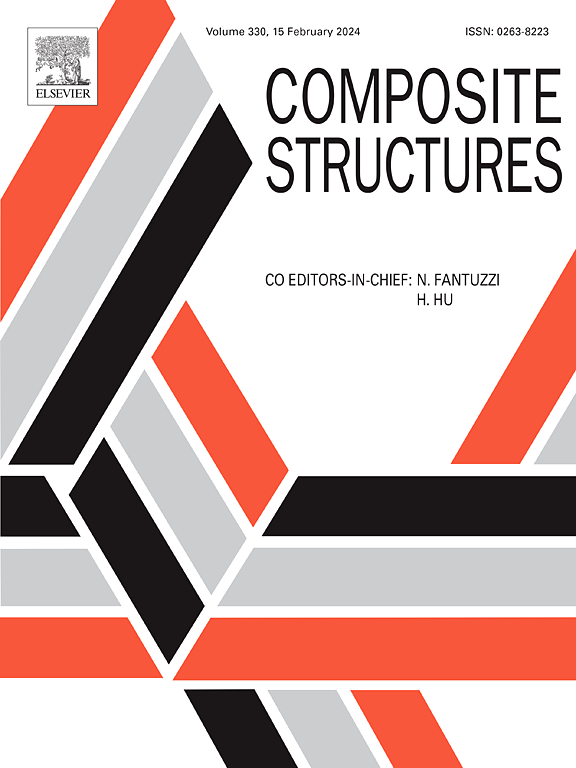Homogeneous and functionally graded piezoelectric structure analysis with finite block method
IF 6.3
2区 材料科学
Q1 MATERIALS SCIENCE, COMPOSITES
引用次数: 0
Abstract
In this paper, the functionally graded structures are investigated by using the partial differential matrix of the finite block method with Lagrange polynomial interpolation. A discrete scheme is proposed first time to solve the two- and three-dimensional piezoelectric coupling problems. The nodal values of the displacements and electric potential are evaluated by solving a set of linear algebraic equations established from the governing equations and boundary conditions of the piezoelectric problems. The dynamic responses of the layered piezoelectric problems are solved either in Laplace transform domain with Durbin’s inverse technique or in time domain Houbolt method. Several numerical examples are given to investigate 2D homogeneous and functionally graded material structures vibration under actuator voltage. In addition, the influence of three kinds of boundary condition on the maximum deflection is also studied in order to control the piezoelectric integrated structure by applying actuator voltage to the upper and lower surfaces of the piezoelectric layer. Three-dimensional static and dynamic analysis in piezoelectric materials are also carried out in this paper. By comparing with both analytical solutions and numerical solutions by COMSOL, the results show high accuracy and convergence.
基于有限块法的均匀和功能梯度压电结构分析
本文利用有限块法的偏微分矩阵和拉格朗日多项式插值,研究了功能梯度结构。首次提出了求解二维和三维压电耦合问题的离散格式。通过求解由压电问题的控制方程和边界条件建立的一组线性代数方程,求出了位移和电势的节点值。层状压电问题的动力响应可以在Laplace变换域用Durbin逆法求解,也可以在时域用Houbolt法求解。给出了二维均质和功能梯度材料结构在致动器电压作用下的振动数值算例。此外,还研究了三种边界条件对最大挠度的影响,以便通过在压电层的上下表面施加致动器电压来控制压电集成结构。本文还对压电材料进行了三维静、动态分析。通过COMSOL的解析解和数值解的比较,结果显示出较高的精度和收敛性。
本文章由计算机程序翻译,如有差异,请以英文原文为准。
求助全文
约1分钟内获得全文
求助全文
来源期刊

Composite Structures
工程技术-材料科学:复合
CiteScore
12.00
自引率
12.70%
发文量
1246
审稿时长
78 days
期刊介绍:
The past few decades have seen outstanding advances in the use of composite materials in structural applications. There can be little doubt that, within engineering circles, composites have revolutionised traditional design concepts and made possible an unparalleled range of new and exciting possibilities as viable materials for construction. Composite Structures, an International Journal, disseminates knowledge between users, manufacturers, designers and researchers involved in structures or structural components manufactured using composite materials.
The journal publishes papers which contribute to knowledge in the use of composite materials in engineering structures. Papers deal with design, research and development studies, experimental investigations, theoretical analysis and fabrication techniques relevant to the application of composites in load-bearing components for assemblies, ranging from individual components such as plates and shells to complete composite structures.
 求助内容:
求助内容: 应助结果提醒方式:
应助结果提醒方式:


